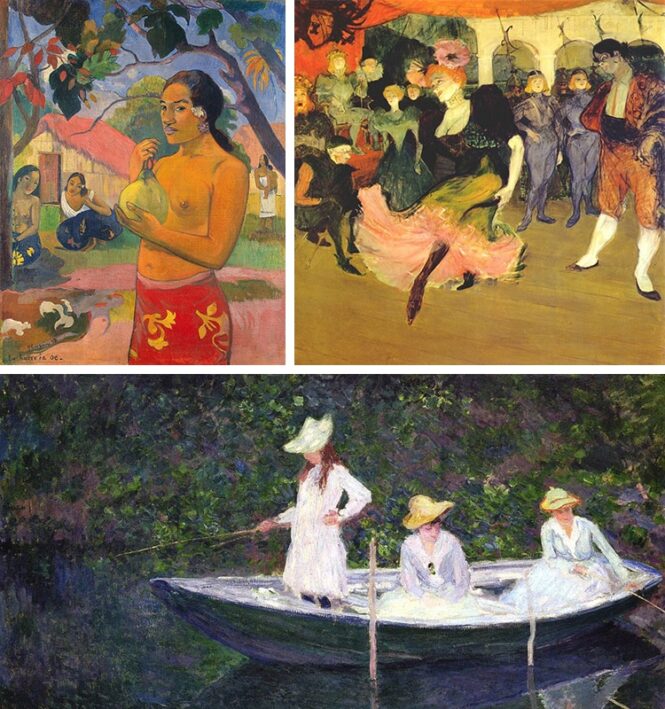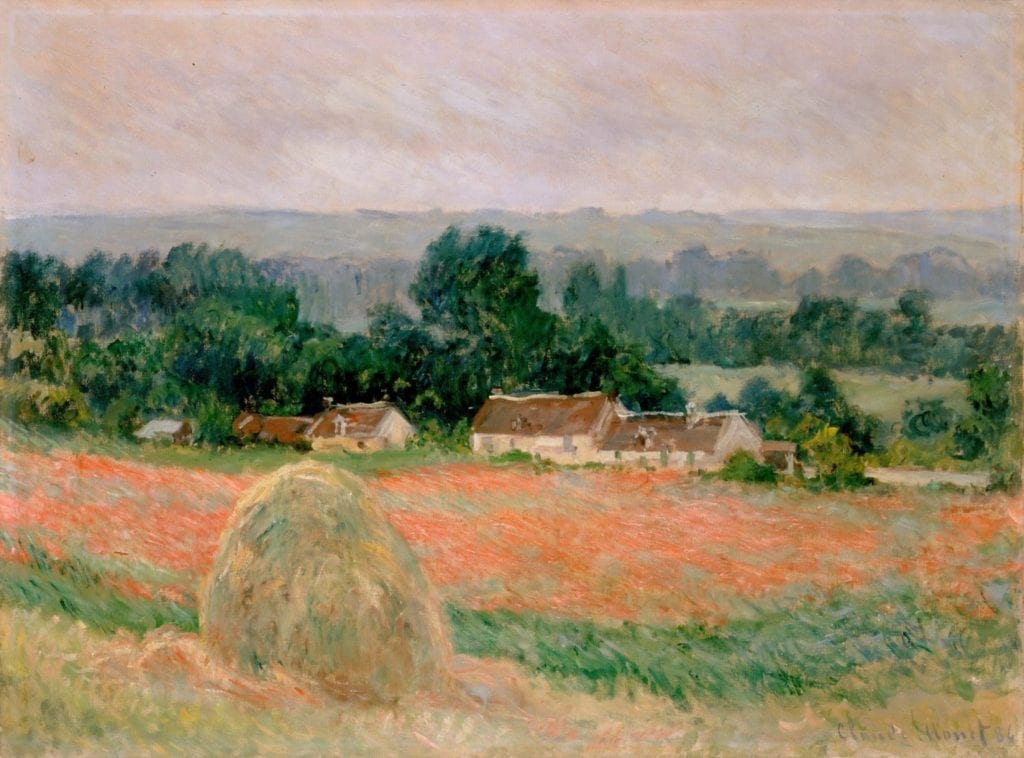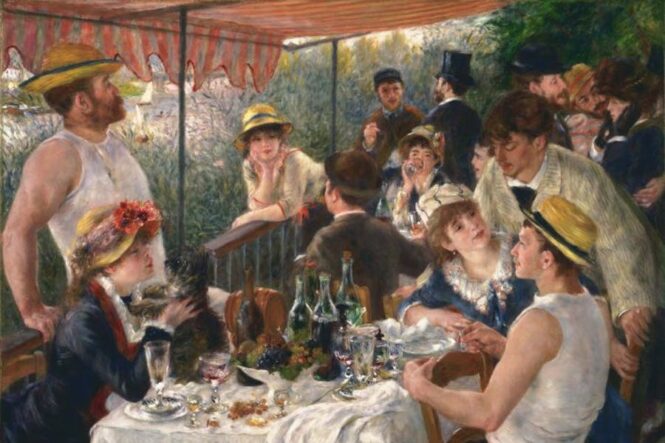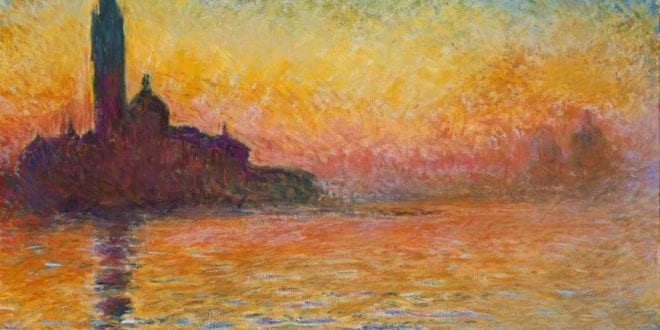The history of European art would not be what it is today without French painting. Almost every epoch was able to offer significant names, but the nineteenth-century impressionist works had the greatest echo. Impressionism emerged as a reaction to realism, introducing into the painting an overflow of colors, landscapes, light, and rivers.
This movement took French painters out of the dark ateliers and redirected them to the beauty of the countryside and some new, vibrant colors.
Impressionism

This is an artistic direction that originated in French painting between 1860 and 1870 as a reaction to realism. Famous French writer Emil Zola vividly described the origin and characteristics of this artistic direction “We need sun, free air, one light, and young painting. Let the sun go in and paint things as they look in the full light of day.”
It creates a new attitude towards the world and looks for a new way of visual expression. Paintings are the impression of immediate visual impressions. To emphasize their approach to art, they used the most common motifs to choose river landscapes, regatta scenes, and picnics, snow, sky covered with clouds, water ponds, because in their painting they could evoke the glare of sunlight on the water, the shimmering play of shadows. and in general, they display fluid and volatile aspects of reality.
The banks of the Sena River and the banks of the Canal, along with the Fontainebleau Forest, were the main motifs of this new painting that represented nature through subjective impression. They release a matter of weight and solidity and transform the energy of pure light into playful cheerful and sensual movements of color. An essential criterion for this artistic direction is the presentation of objects and nature through coloristic analysis, suggested by the sun, light, and air. For this reason, local colors are lost and color points appear in their place, which recomposes in the eye of the beholder. Perspective is not formulated through the surface disposition on the canvas but is created by the color and brush strokes that are affected by changes in the atmosphere. The dissolution of light into spots and short strokes of the brush followed the law of chromatic simultaneous contrast, whereby the alternation of colors adjacent to one another occurs for reasons of the law of complementarity.
Based on such treatment of color, which was not dogmatically applied from the beginning, neo-impressionists, whose main representatives were Georges Seurat and Paul Signac, evolved towards pointillism, using scientific color analysis.
The goal of Impressionism is to create a perfected illusion of the appearance of nature, where everything, even the transient effect of the atmosphere over light, can be represented. Depicting the atmosphere and presenting subjective impressions as a spiritual stimulus determine the stylistic character of this direction.
Claude Monet, the man who brought the sun into painting

“Impression, Sunrise” is the most famous work of Claude Monet, the most significant Impressionist. This painting of Monet in an interesting way influenced the name of the whole direction because among the numerous criticisms there appeared a comment whose author mockingly used the term “impressionism” to sharpen his criticism. The term remained in use, and over time it received a positive context, which was certainly not the intention of the critics.
Monet’s first painting was “Women in the Garden,” published in 1867. In his paintings, it is possible to see female figures in nature that were usually modeled after his wives, but undoubtedly Monet’s greatest inspiration was the landscapes. The most frequently painted landscapes in his works depicted the beauties of northern France and London, where he lived during the Franco-Prussian War. He loved to paint in the comfort of his yard and home where his friends, also the famous painters, Mane and Renoir, often stayed.
If you want to see what his work looks like and even enhance your home with one of them, click here.
Pierre-Auguste Renoir, an artist who knew to paint emotion

Renoir was one of the foremost Impressionists who introduced female figures in this direction, seeking to portray their imperfection as a basic form of beauty. His works were full of vibrant colors, light and positive emotions, leaving the impression of a happy man who skillfully conveys his mood to the painting.
However, those who knew him claimed that the painter did not always control his mood and did not seem happy. Renoir’s works thus represent that part of his personality that he lacked in life, but was constantly present in the colors, motifs and figures he painted.
“La Grenouillère”, “Two Sisters”, “Girls at the Piano”, “The Bathers”, “Dance at Bougival” are just some of Renoir’s works that bring to life the spirit of the time in which he lived.
Édouard Manet, impressionist rebel
Although the works of this painter cannot be completely classified as Impressionist, it is important to mention Maneta due to the fact that he served as an inspiration to many artists. His work is rich in clear colors and vibrant painting techniques, and most often featured everyday scenes, from beggars on the street and people strolling through the park, to Spanish corridor fights.
The 1863 “The Luncheon on the Grass” is his most significant painting, which, due to the motifs shown, caused a number of different, mostly negative comments after it appeared at an exhibition in Paris. The picture shows a naked female figure in the company of dressed men, who, in addition to being naked, seems very confident. This scandal discredited Manet in the circles of his academic colleagues, but also made him the leader of the young rebels who was developing this new movement at the time.
Conclusion:
Impressionism developed as a reaction to the already established realism, so it is natural that the first works were greeted with a great deal of skepticism and numerous negative criticisms from official painting circles. Nevertheless, thanks to the new motifs and the great paintings it gave birth to, impressionism in France became one of the most significant periods in the history of European art.
Source: https://www.paintingkits.net
 Imagup General Magazine 2024
Imagup General Magazine 2024



